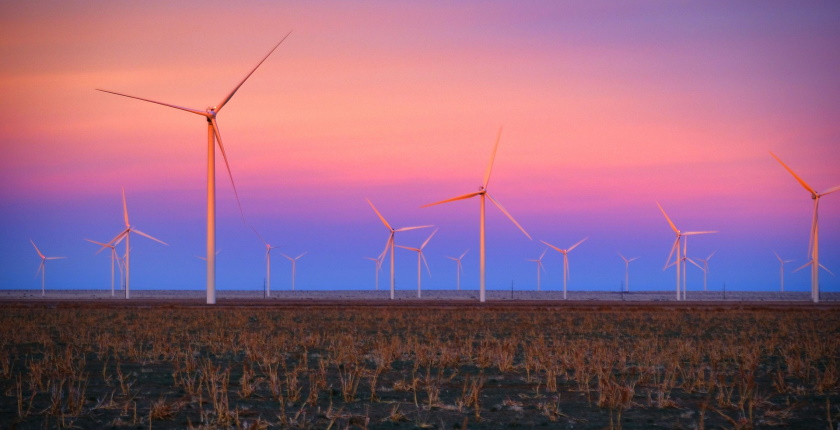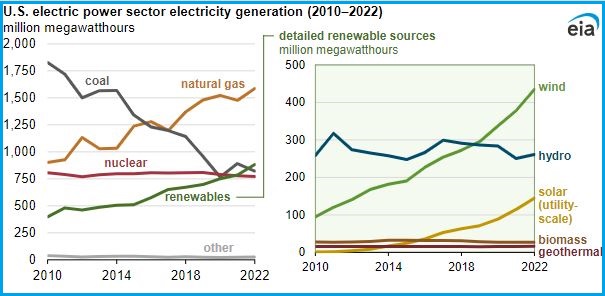
Wind farms in Texas (photo: Pawel Kostrzewa from Pixabay)
For the first time, wind, hydro, solar, biomass, and geothermal energy have together surpassed coal in electricity production in the United States in 2022. Renewables surpassed nuclear power plants in output in 2021.
The US power sector produced 4,090 TWh last year, and the share of renewables was 21%, the Energy Information Administration (EIA) said.
The combined wind and solar share in total generation increased from 12% in 2021 to 14% in 2022. Hydropower generation remained unchanged, at 6%, similar to the shares for biomass and geothermal sources, which accounted for less than 1%
EIA said growth in wind and solar capacity drove the increase. The output at utility-scale photovoltaic units increased from 61 GW to 71 GW year on year, according to the Electricity Power Monthly. Wind capacity rose from 133 GW to 141 GW.

The share of coal-fired generation decreased from 23% to 20%. EIA attributed the drop to the retirement of the coal facilities and the lower use of the remaining plants.
For the second year in a row, renewables generated more electricity than nuclear power plants on a relative basis. The share of nuclear production came in at 20%, compared to 19% from 2021. The main reason was the shutdown of the Palisades nuclear power plant in May, EIA said.
Texas is the green energy champion in the US
Natural gas remained the largest source of electricity generated in the US, increasing from a 37% share to 39%.
The wind champion among US states was Texas – 26% of the total in the sector last year, followed by Iowa (10%) and Oklahoma (9%).
In 2022, California ranked first in utility-scale solar generation, accounting for 26% of the entire sector. Next was Texas, with 16%.


















Be the first one to comment on this article.